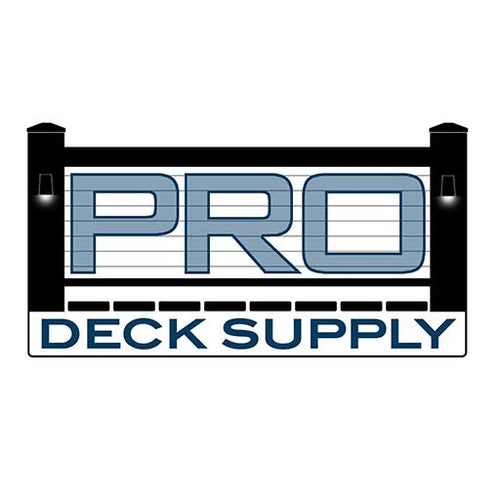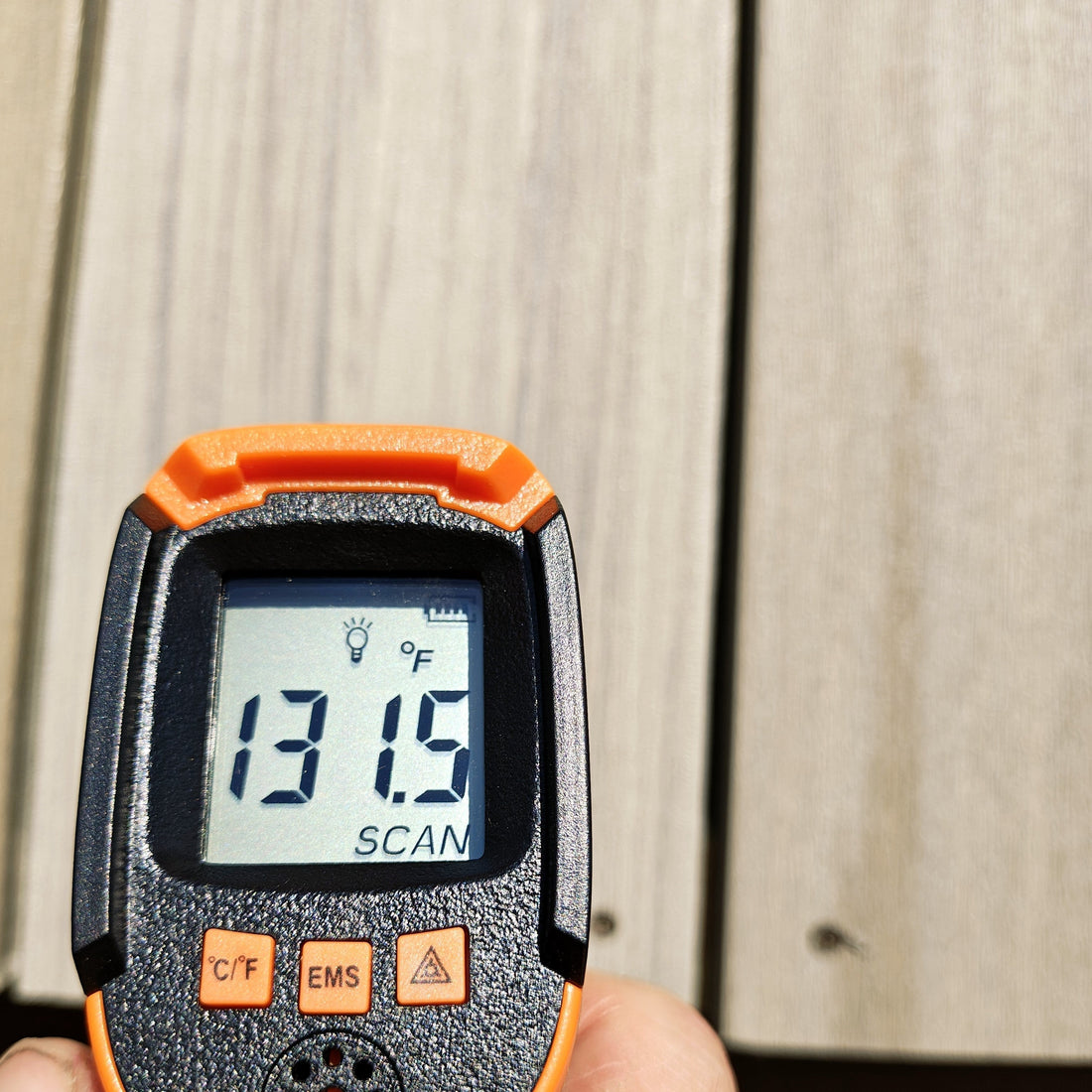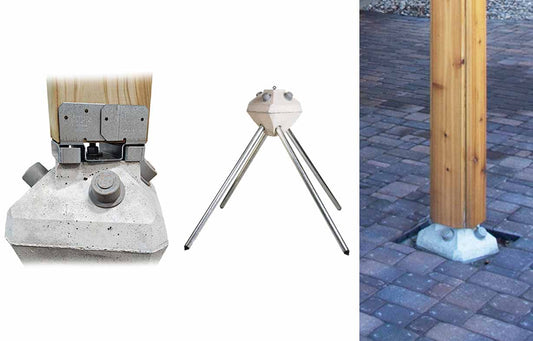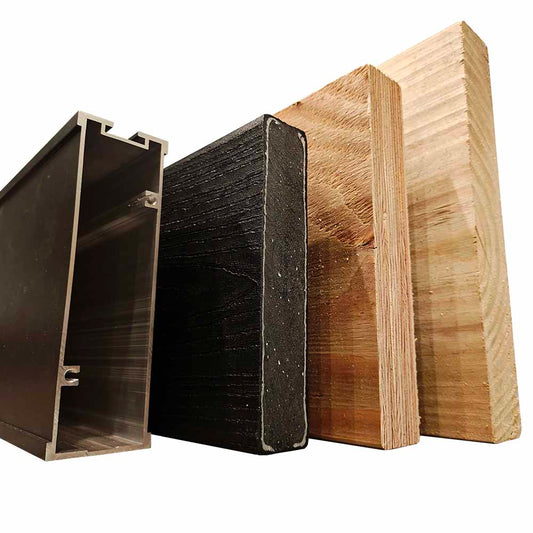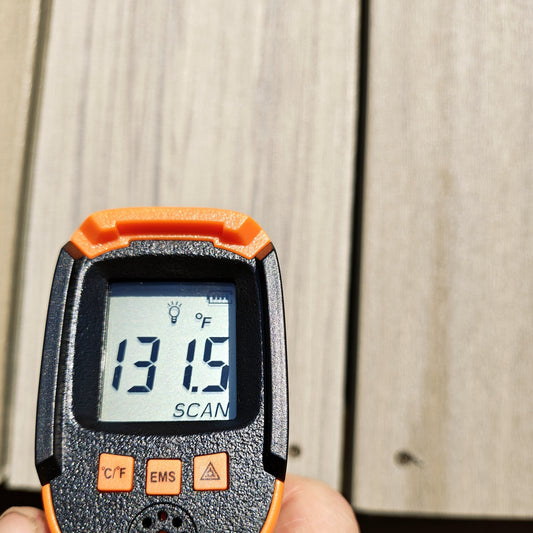Deck boards come in all sorts of profiles, colors, textures, and materials. Dark colors tend to get hotter faster than others. Different board profiles tend to cool faster than others.
Denser board materials feel hotter to the touch than others. This is where density is key.
Let's say you put your hand on two medium gray full profile boards that have been out in the sun for the same amount of time. The only significant difference is that one is PVC and the other is wood-plastic composite. PVC is about half as dense as WPC. Surestone decking is going to be similar to PVC decking in terms of density and heat dissipation.
Maybe you measure the boards with a laser thermometer, and they both are 145 degrees Fahrenheit. When you put one hand on each board, they both feel quite hot for about a second. Then the PVC board starts to feel cooler and not as hot anymore, but the composite board feels too hot to continue touching.
This is because your hand more easily absorbs some of the heat from the PVC board and immediately cools it. The composite board, on the other hand, keeps much of its heat and continues warming up your hand to the point that it's unbearable.
Think of it this way: if you've left a metal chair and a plastic chair out in your yard on a hot day, which would you choose to sit on? They're both probably warm or even hot, but the plastic one is probably going to be your choice. Because even if it's hot to the touch, it will cool down after you sit in it for a few seconds.
You might say "but I'm not going to be standing in one place on my deck for long, especially if I'm walking around on it. My feet wouldn't have time to equalize and 'cool off' the decking where I'm standing, so this doesn't really matter, right?"
Valid point, but your feet aren't the only thing that will absorb heat from the deck boards. Airflow is the other side of this coin. The denser the board composition, the longer it will take for any circulating air or breezes to cool off your deck. This is why decks that are closer to the ground will tend to stay warmer for longer.
Choosing a deck board is just as situational as it is personal. This is why our three key questions when helping you choose your decking are about deck height, sun exposure, and color preference.
If you're hoping to geek out on some statistics...
We tested different colors of PVC, composite, and Surestone decking. We set up a worst case scenario: no airflow below the boards, 84F ambient temperature, and direct midday sun. Temperatures were measured with a laser thermometer, which doesn't reflect how cool it would feel, but does show how dark colors absorb more heat, and absorb it faster. Cooldown time is how long it takes to go from its hottest down to 80 degrees in a 75 degree ambient temperature (imitating a sunset setting).
| Deck Board | Max Temp | Color | Cooldown time to 80° F |
| Azek Vintage Coastline (PVC) | 122° F | Medium | 33 minutes |
| Deckorators Voyage Tundra (Surestone) | 147° F | Medium | 34 minutes |
| Deckorators Voyage Costa (Surestone) | 145° F | Medium | 35 minutes |
| Deckorators Venture Sandbar (WPC) | 155° F | Medium | 36 minutes |
| Ipe hardwood (wood) | 141° F | Medium | 42 minutes |
| Timbertech Reserve Reclaimed Chestnut (WPC) | 143° F | Light | 53 minutes |
| Timbertech Legacy Espresso (WPC) | 159° F | Dark | 56 minutes |
